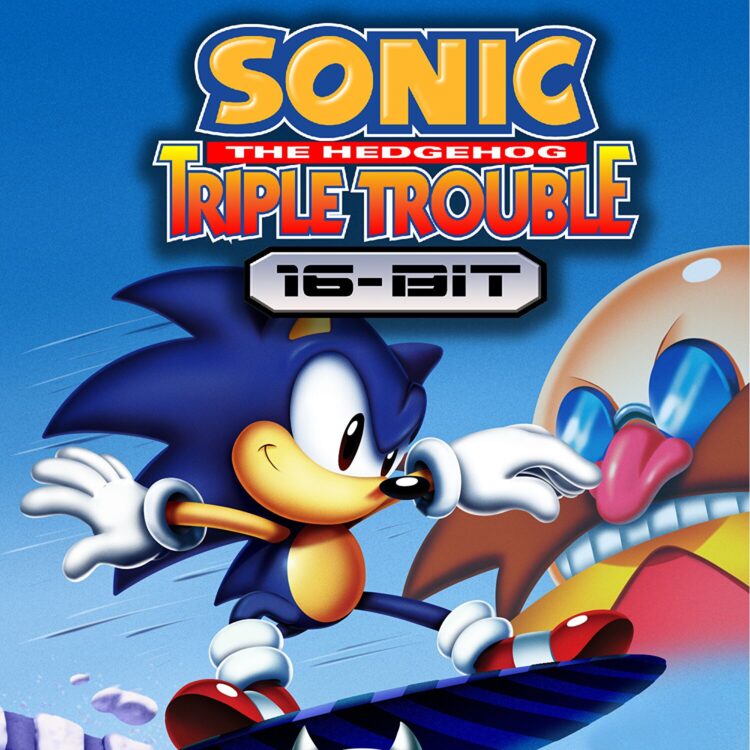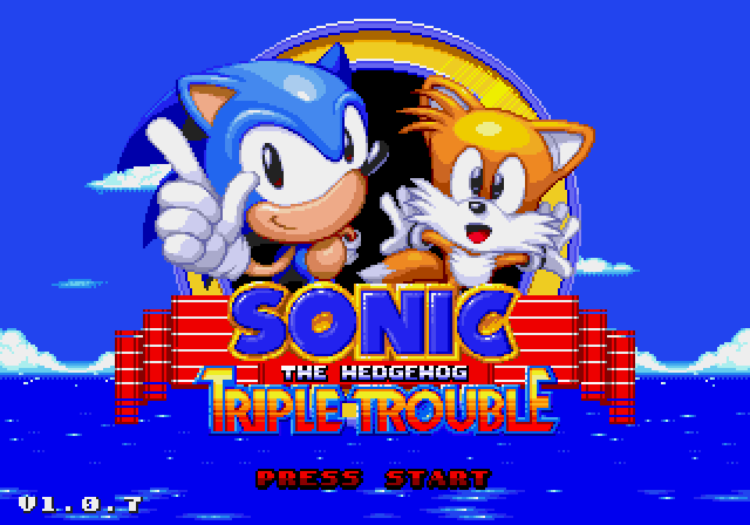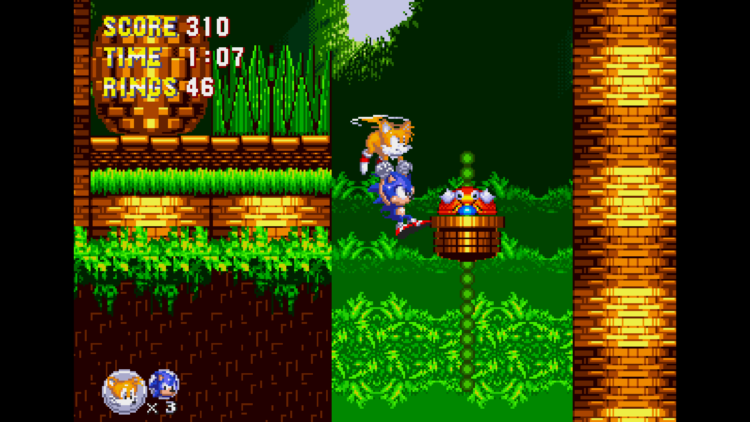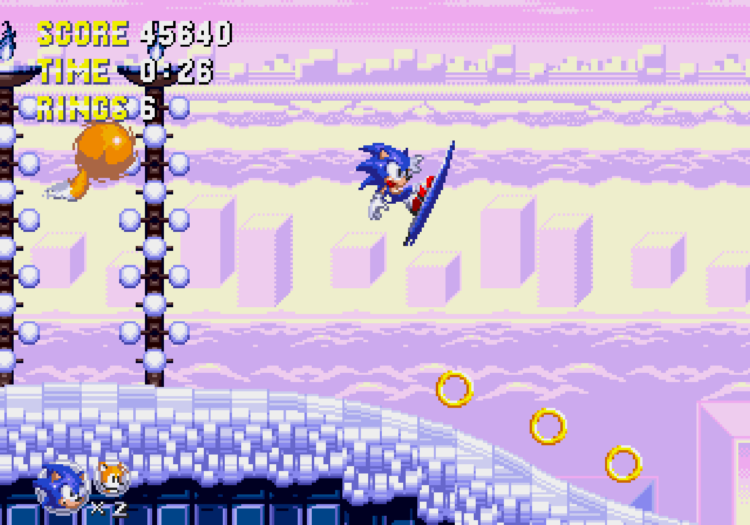
As part of our SAGE coverage, we managed to get a hold of Noah Copeland to come have a chat with us about the development of his fangame Sonic Triple Trouble 16 bit. This love letter to the classic Game Gear game released to much fanfair last month, remaking the original games visual to fit perfectly with it’s classic Mega Drive counterparts, featuring the ability to switch between Sonic or Tails as well as multiple playable characters. Hit the break for the first of two part interview with Noah as he goes into more detail about the fan games history and development ideology!

Press Start and let’s go! Let the adventure begin!
SEGAbits: It’s great to finally get to chat with you here at SEGAbits, so please give us a quick introduction of yourself!
Noah Copeland: I’m Noah Copeland, designer & director of Sonic Triple Trouble 16-bit.
SEGAbits: First of all, how did you become a Sonic fan, any cool memories you can share?
Noah Copeland: Remember when stores had those game demo kiosks where the controller was down low and the screen was 12 feet in the air? I cranked my neck to a demo of Sonic Adventure 2: Battle once. The music, the attitude, the stunts, the camera work, the action, the gameplay… it was everything my ten year old brain could have wanted! I was hooked. But I couldn’t afford a Game Cube, so I found a CD-ROM the next aisle over. It was Sonic 3 & Knuckles for Windows 95. It was the first game I ever bought.

Players can switch between Sonic and Tails on the fly to give access to new areas otherwise unexplorable with a single character
SEGAbits: What brought you into the fangaming scene, you’ve been a composer so it must have been a jump to go from making music to learning about game engines and working on level design, coding and all sorts of things as the lead dev?
Noah Copeland: I’m a creative person, so when I love something, I want to create more of it. So naturally I’ve been making video games in my head since I was a child. I used to draw level maps and controller layouts on the back of my homework. I draw my own Mario levels, Sonic levels, and even my own original characters. And I really wish I hadn’t thrown them all away!
I have a background in music composition, and a degree in audio production, so when the urge to work on Sonic fan games hit as a young adult, the audio department was the natural fit. I’m really proud of the songs I made for Sonic Project Survival. The thing is, it got hard to sit back and watch as projects fell apart. It was frustrating to watch people argue instead of creating. All I could do was go off in my own little corner and make music. But I soon to started to get involved in more, as I couldn’t help it.
Once the third Sonic fan project I helped with fell apart, it was clear that I was going to need to roll up my sleeves and see if I do this myself. So I learned.
I learned programming. I learned game design. I learned level design. I learned how to make SEGA Genesis music. There’s really no secret other than I just did a lot of research, and worked really hard. Lots of practice. Lots of looking at old Sonic maps. Lots of really bad levels before I started making anything playable.
SEGAbits: And what lead you to deciding to remake Sonic Triple Trouble in particular?
Noah Copeland: I was working on a film in 2017, and we had wrapped on-location one day. Someone from the crew brought out a copy of Sonic Triple Trouble. This was right around the time I was wanting to venture out to lead my own Sonic fan game project. It occurred to me that remaking an existing Sonic game would be way more practical than trying an entirely new game from scratch. The ideas are already there, and you don’t have to get lost in which direction you should take. You have the original game right there, acting as a compass to guide you in the right direction.

Every stage in Sonic Triple Trouble 16 bit is lovingly created in a way to insure it fits in with the Genesis aestehtics
SEGAbits: I noticed playing through the game there were some moments that reminded me of effects from other games like Mickey Mouse. Was that a conscious design decision on your part to emulate the 16 bit feeling and what other Genesis games did you look at and go “Yes, I definitely need to try this!”
Noah Copeland: Oh, definitely. As part of my research, I watched and played hundreds of hours of Sega Genesis games outside of Sonic. It was important that my game look and feel accurate to the limitations of the Genesis. So there are lot of references to 16-bit games in there. Mickey Mania, Ranger X, Shinobi III, Rocket Knight Adventures, as well of some non-Genesis of the era like Buster Busts Loose
SEGAbits: It really makes the title feel like a much more authentic Genesis title, especially how you’ve added technical moments to showcase a technique just like they did in the past. Some of these games must have played a part in inspiring you too, which ones do you think helped push you towards getting into game dev?
Noah Copeland: Fun fact, I never owned a Genesis as a kid, but I first learned to love Genesis games through playing Sonic Mega Collection back in the day. Ristar was a big one. It’s just a beautiful Genesis game. I’m so glad it was unlockable in Mega Collection.
The remake stays true to the original’s spirit, but now Sonic joins Tails in the Sea Fox!
SEGAbits: Was there anything you had to keep in mind with the difficulty curve? I found one particularly tricky part towards the end game but I imagine there must have been more, did you adjust any other harder sections? Can you talk us through the process?
Noah Copeland: What’s funny is I was afraid my game was going to be too easy. I made an intentional choice to make the game much friendlier than any of the Genesis classic titles. My final levels have nothing on Scrap Brain, Metropolis and the like. I don’t think people realise it because they’ve all been playing those first three Sonic games for 20 or 30 years, so they’ve grown numb to the difficulty. We’re all pros at beating that final Sonic 2 boss cause we’ve had years of practice. But take a second to remember how those last few levels felt the first time we played them. Think about all the cheap badnik placement that blindsides you, before you memorised it. It was not easy then, and my game is easier than that.
I was very cognizant of the fact that people are used to modern conveniences, so I severely cut down on the cheap shots for my game compared to the classics. There are only two or three bottomless pits in the whole game. I made the game even easier during playtesting. Post release, I’ve patched Atomic Destroyer four times to add more rings. Also, if you get a game over, you start back at the exact same act you were on. Sonic 3 puts you back at the start of the zone, and Sonic 2 puts you back at the start of the game! When you tally it all up, STT 16-bit is very forgiving by comparison, so I was surprised that difficulty was still an issue for some people. I’m happy with the balance I achieved.
There was a ten year old kid with a youtube channel who reviewed the game at SAGE 2020. His biggest complaint was that it wasn’t challenging enough, which I found pretty funny
Really, you just have to play test and see where the struggle parts are. As the lead dev, I’m very biassed in knowing what I’m supposed to do when I playtest a level so you need outside testers. My wife is great at this, because she doesn’t play many action games. I get to see everything through fresh eyes watching her play it.
SEGAbits: And that’s a wrap for part one, log back in tomorrow where we’ll talk to Noah about his game designer idols and his future plans!
Ad:






